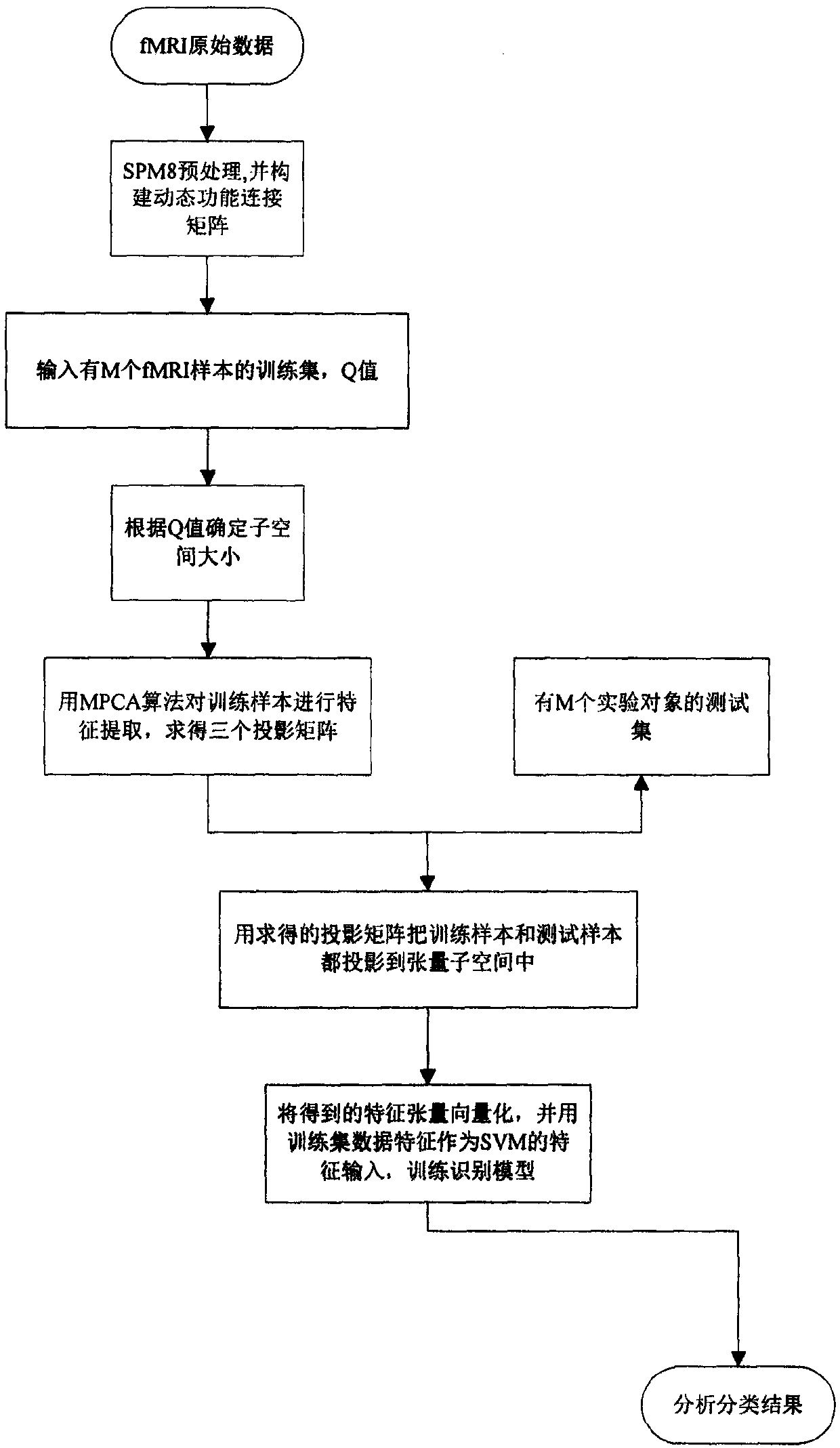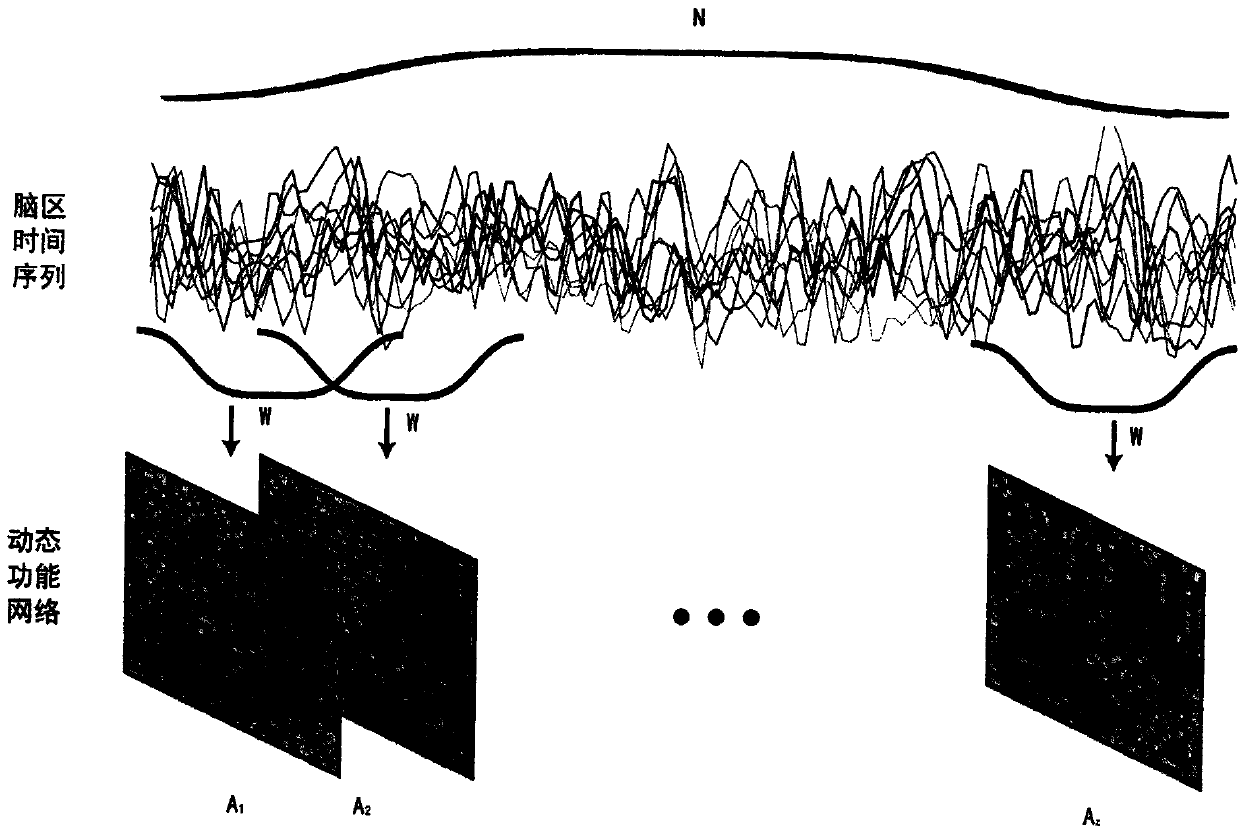A fmri feature extraction and recognition method based on tensor decomposition
A technology of feature extraction and tensor decomposition, applied in character and pattern recognition, instrumentation, calculation, etc., can solve the problems of dimensional disaster, small number of subjects, difficult to describe the dynamic information of adjacent functional connection matrix, etc. The effect of counting disasters and improving robustness
- Summary
- Abstract
- Description
- Claims
- Application Information
AI Technical Summary
Problems solved by technology
Method used
Image
Examples
Embodiment Construction
[0027] Assume that there are currently 30 healthy adults and 30 healthy children under 10 years old. All subjects are right-handed, and the brain function image data is scanned by the same instrument, and the number of scanning sequences is 224. In order to test the effectiveness of the algorithm, half of the adult and child test data were taken out as the training set data, and the remaining half was used as the test set. The specific algorithm is as follows, the process is as follows figure 1 shown.
[0028] The first step is to preprocess all the data, remove the first ten unsteady-state scan sequences, and use SPM8 software to perform time layer correction, head motion correction, and smoothing on the original fMRI data, and perform 00.1 on the image after removing the influence of low-frequency drift. ~0.1Hz filtering; Finally, the influence of whole brain signal, cerebrospinal fluid signal, and head movement covariate parameters is eliminated by DPARSF software;
[002...
PUM
 Login to View More
Login to View More Abstract
Description
Claims
Application Information
 Login to View More
Login to View More - R&D
- Intellectual Property
- Life Sciences
- Materials
- Tech Scout
- Unparalleled Data Quality
- Higher Quality Content
- 60% Fewer Hallucinations
Browse by: Latest US Patents, China's latest patents, Technical Efficacy Thesaurus, Application Domain, Technology Topic, Popular Technical Reports.
© 2025 PatSnap. All rights reserved.Legal|Privacy policy|Modern Slavery Act Transparency Statement|Sitemap|About US| Contact US: help@patsnap.com



